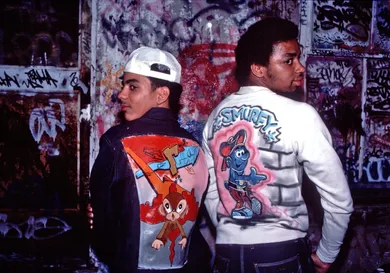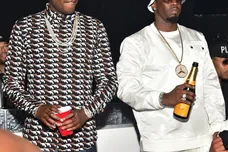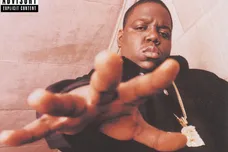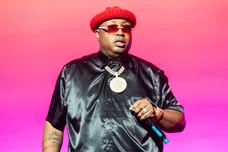This year marks the 39th anniversary of the movie Beat Street. Released in 1984, the film was one of the first to depict hip-hop culture on the big screen. It set the standard for films that would follow decades later, like You Got Served, the Step Up series, and more. Breakdancing, DJing, MCing, and graffiti art were all showcased in the movie. The film’s depiction of hip-hop culture helped spread it to global audiences.
Additionally, it features multiple appearances from popular hip-hop acts from its time, including Doug E. Fresh, DJ Kool Herc, Grandmaster Melle Mel and The Furious Five, and more. They shot the film on location in New York, with scenes even being shot in the subways. The movie was produced by Harry Belafonte and directed by Stan Lathan.
What Happens In Beat Street?
Beat Street is a movie that follows the lives of siblings Kenny and Lee and Kenny’s best friend, Ramon. Kenny, AKA Double K, is a DJ who also MCs, and Lee is a break dancer. Ramon is a graffiti artist. Kenny and Lee have a slight age gap, but Lee typically finds his way to events where his brother is DJing and dances to the music he provides.
Double K dreams of ascending in his DJ career, and his friend, Chollie, is always looking for places for Kenny to perform at. Kenny meets a woman named Tracy, who is from City College of New York. The two of them form a romance, and he learns their musical backgrounds are not so different after all.
Why Beat Street Is Important
The movie Beat Street was important because of its showcase of hip-hop culture. There were also multiple notable figures from the culture at the time in the film playing characters and themselves. Many of them had scenes dedicated to full performances from them, such as Us Girls, The Treacherous Three and Grandmaster Melle Mel, and The Furious Five. DJ Kool Herc plays himself in the movie, too.
The New York City Breakers and Rock Steady Crew also showcased their dance skills in scenes. For many people who were a part of this time in history, the movie holds a special place in their hearts. They remember dancing to the songs from the soundtrack or being inspired to start dancing by the movie itself.
The Impact Of Beat Street On The Culture
The movie Beat Street influenced hip-hop culture decades after it was released. Other movies centered around hip-hop and culture soon followed. One of the most significant examples was how Public Enemy’s “Fight The Power” was written for Spike Lee’s film Do The Right Thing (1989). Dr. Dre and Snoop Dogg wrote “Deep Cover” for Bill Duke’s film of the same name in 1992. Hustle and Flow (2005) was a film about a rapper from the South on the come up and the soundtrack featured several Southern rap artists from the time. Other culture-focused films like Roll Bounce (2005), ATL (2006), and more would follow, bringing dramatized versions of reality and culture to the big screen. Viewers who could relate to these stories praised and celebrated the movies. More directors and writers continued to bring stories like this to audiences all over.
Beat Street Exposed The Culture To The World
The movie Beat Street also accurately represented society outside of the music. In one scene, Lee and his crew have a dance battle with their rival crew in a subway. The police interrupt the battle because they view it as “fighting.” Lee and his crew end up in holding cells - they are all teenagers. In all of Beat Street’s party scenes, they showcased people of all cultural backgrounds. Hip-hop culture was something people of all backgrounds enjoyed. Beat Street helped introduce hip-hop culture to multiple audiences outside of New York - even those as far as Germany. The movie highlighted a piece of culture that was once regional and made it global.
[via]









